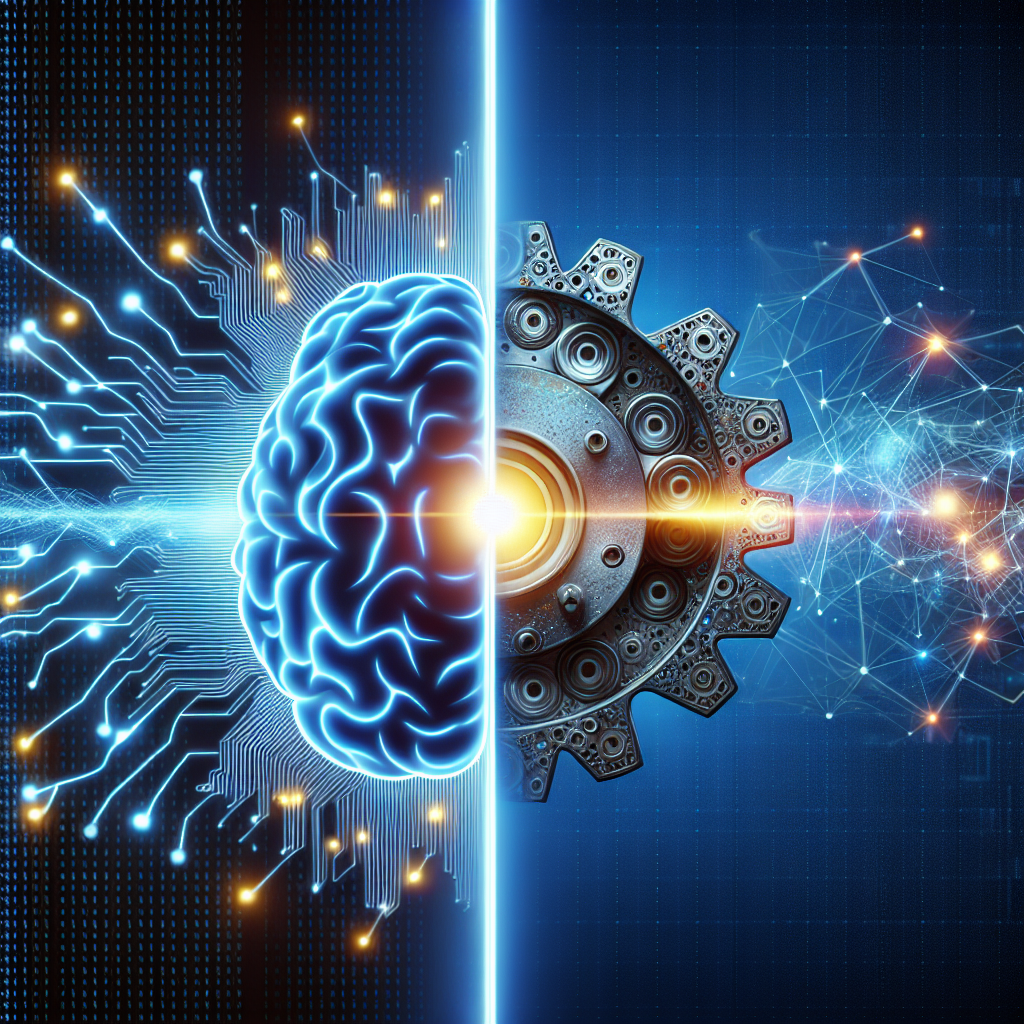Artificial Intelligence (AI) and Machine Learning (ML) are two of the most talked-about technologies in the world today. Both have the potential to transform industries, businesses, and our everyday lives in significant ways. But what exactly are AI and ML, and how do they differ from each other? In this article, we will explore the differences between AI and ML, and discuss which technology is more transformative.
AI vs Machine Learning: What’s the Difference?
Artificial Intelligence is a broad field of computer science that aims to create machines that can perform tasks that typically require human intelligence, such as speech recognition, decision-making, and learning. AI systems can be classified into two categories: Narrow AI and General AI. Narrow AI, also known as Weak AI, is designed to perform specific tasks, such as playing chess or recognizing faces. General AI, also known as Strong AI, is a more advanced form of AI that can perform any intellectual task that a human can do.
Machine Learning, on the other hand, is a subset of AI that focuses on developing algorithms that enable machines to learn from data and make predictions or decisions without being explicitly programmed. ML algorithms can be categorized into three main types: supervised learning, unsupervised learning, and reinforcement learning. In supervised learning, the algorithm is trained on labeled data to make predictions. In unsupervised learning, the algorithm learns patterns in unlabeled data. In reinforcement learning, the algorithm learns by interacting with an environment and receiving feedback on its actions.
While AI and ML are closely related, they are not the same. AI is a broader concept that encompasses various technologies, including ML. ML is a specific approach to achieving AI by training algorithms on data. In other words, ML is a subset of AI.
Which is More Transformative: AI or Machine Learning?
Both AI and ML have the potential to transform industries and society in significant ways. However, AI is often seen as the more transformative technology due to its broader scope and potential applications. AI has the power to revolutionize industries such as healthcare, finance, transportation, and manufacturing by automating tasks, improving decision-making, and enabling new capabilities.
For example, in healthcare, AI-powered systems can analyze medical images, diagnose diseases, and recommend treatment plans with a level of accuracy that rivals human experts. In finance, AI algorithms can detect fraudulent transactions, predict market trends, and optimize investment portfolios. In transportation, AI can be used to optimize traffic flow, improve safety, and enable autonomous vehicles.
While AI is more transformative in terms of its potential impact, ML plays a crucial role in enabling AI systems to learn from data and make intelligent decisions. ML algorithms are the building blocks of AI systems, allowing machines to analyze large amounts of data, identify patterns, and make predictions. Without ML, AI systems would not be able to learn from data and adapt to new situations.
In summary, AI and ML are both transformative technologies, but AI is seen as more transformative due to its broader scope and potential applications. ML plays a crucial role in enabling AI systems to learn from data and make intelligent decisions.
FAQs
Q: What are some examples of AI applications?
A: Some examples of AI applications include virtual assistants (such as Siri and Alexa), recommendation systems (such as Netflix and Amazon recommendations), autonomous vehicles, chatbots, and facial recognition systems.
Q: How does Machine Learning work?
A: Machine Learning works by training algorithms on data to make predictions or decisions. The algorithm learns patterns in the data and uses them to make predictions on new, unseen data.
Q: What are the limitations of AI and Machine Learning?
A: Some limitations of AI and ML include the potential for bias in algorithms, the lack of transparency in decision-making, and the difficulty of interpreting and explaining the results of AI systems.
Q: How can businesses benefit from AI and Machine Learning?
A: Businesses can benefit from AI and ML by automating tasks, improving decision-making, enhancing customer experiences, optimizing operations, and enabling new products and services.
In conclusion, both AI and ML are transformative technologies with the potential to revolutionize industries and society. While AI is seen as more transformative due to its broader scope and potential applications, ML plays a crucial role in enabling AI systems to learn from data and make intelligent decisions. Businesses that embrace AI and ML technologies are likely to gain a competitive edge and drive innovation in their respective industries.

